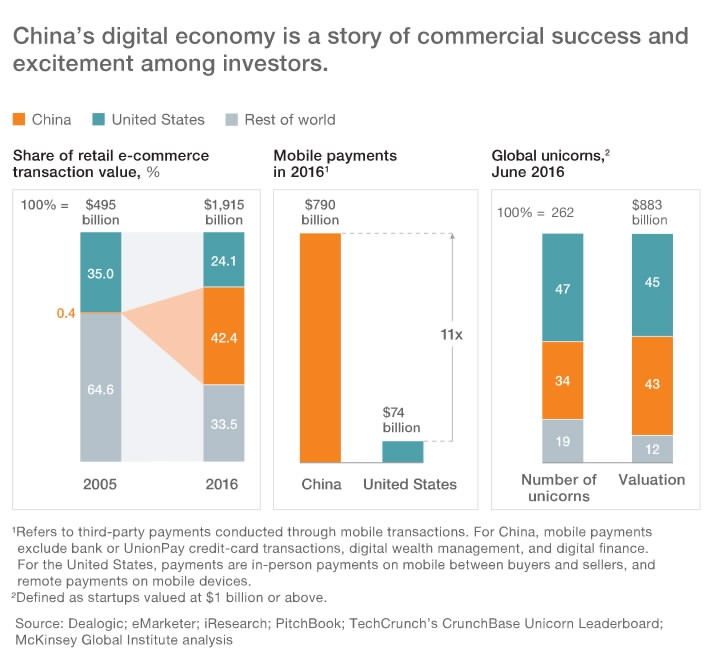
Business
16:23, 09-Nov-2017
Digital economy predicted to make up 35% of China’s GDP by 2020
By Han Jie

As one of the leading economic forums in the Asian region, the Asia-Pacific Economic Forum (APEC) has been instrumental in driving regional economic growth through trade and investment liberalization and pursuing regional economic integration, especially in terms of developing digital economy.
A lesser-known part of this mission are micro, small and medium-sized enterprises (MSMEs), which make up 97 percent of all enterprises and employs over half of the workforce in APEC economies. MSMEs can play a key role in driving economic growth and innovation.

CGTN Photo
CGTN Photo
As arguably the most important driver of innovation, competitiveness and growth, the digital economy is developing rapidly worldwide and it holds huge potential for entrepreneurs and small and medium-sized enterprises.
The digital economy, or the Internet economy, is based on digital computing technologies, creating new business models in the process including e-commerce, cloud computing and payment services.
In China, the booming digital economy had served as a major engine for the country's economic growth for last couple years. In 2016, China's digital economy surged 18.9 percent to 22.6 trillion yuan (3.35 trillion US dollars), according to a white paper issued by the China Academy of Information and Communications Technology (CAICT) and the Ministry of Industry and Information Technology (MIIT).

VCG Photo
VCG Photo
According to the white paper, the digital economy accounted for 30.3 percent of China's total gross domestic product (GDP) last year. The expansion was much faster than China's overall economy, which grew 6.7 percent in 2016.
In China, technology is functioning as a revenue driver and enabler of new business models for many companies, including China’s e-commerce giants Alibaba and JD.com.
CAICT expects China's digital economy to be valued at 32 trillion yuan and account for 35 percent of the country’s total GDP by 2020, before taking up over half of the country's GDP by 2030, according to the white paper.

CGTN Photo
CGTN Photo
At the G20 Hangzhou Summit in 2016, China put digital economy high on the agenda, making it part of the G20 Blueprint on Innovative Growth for the first time.
In developing a modernized economy, the country must focus on the real economy, Chinese President Xi Jinping stressed in the 19th National Congress of the Communist Party of China (CPC), adding that the country will turn Chinese enterprises into world-class, globally competitive firms, and leverage the fundamental role of consumption to become more market-based.
According to Michael Mudd, Managing Director of Asia Policy Partners, the digital economy is expected to contribute two trillion US dollars of additional economic output globally by 2020, while in the Asia Pacific region, the cybersecurity market alone is forecasted to reach 10.5 billion US dollars by 2020.

CGTN Photo
CGTN Photo
"APEC has now become the benchmark for regional grouping seeking to pursue 'open regionalism'," said Jayant Menon, lead economist of the Asian Development Bank, adding that "with rising protectionism pressures throughout the world, institutions such as World Trade Organization and APEC have an even more important role to play in ensuring the world trading system remains free and open.”
By bringing together the world's top two economies, namely the United States and China, and other smaller ones, APEC can take advantage of what different economies can do best, said Alan Bollard Executive Director of the APEC, pointing to the fact that the bloc has helped drive economic growth and improve living standards in the region.
1km

SITEMAP
Copyright © 2018 CGTN. Beijing ICP prepared NO.16065310-3
Copyright © 2018 CGTN. Beijing ICP prepared NO.16065310-3